Your spine isn’t an object, it’s a partnership: several teams made up of many individuals working toward a common goal.
The lumbar team, like the arm of a catapult: a stout bunch that can bend forward and back over and over, tirelessly, to launch you through space. Their articular processes prevent rotation, keeping them all facing the same way, working together.
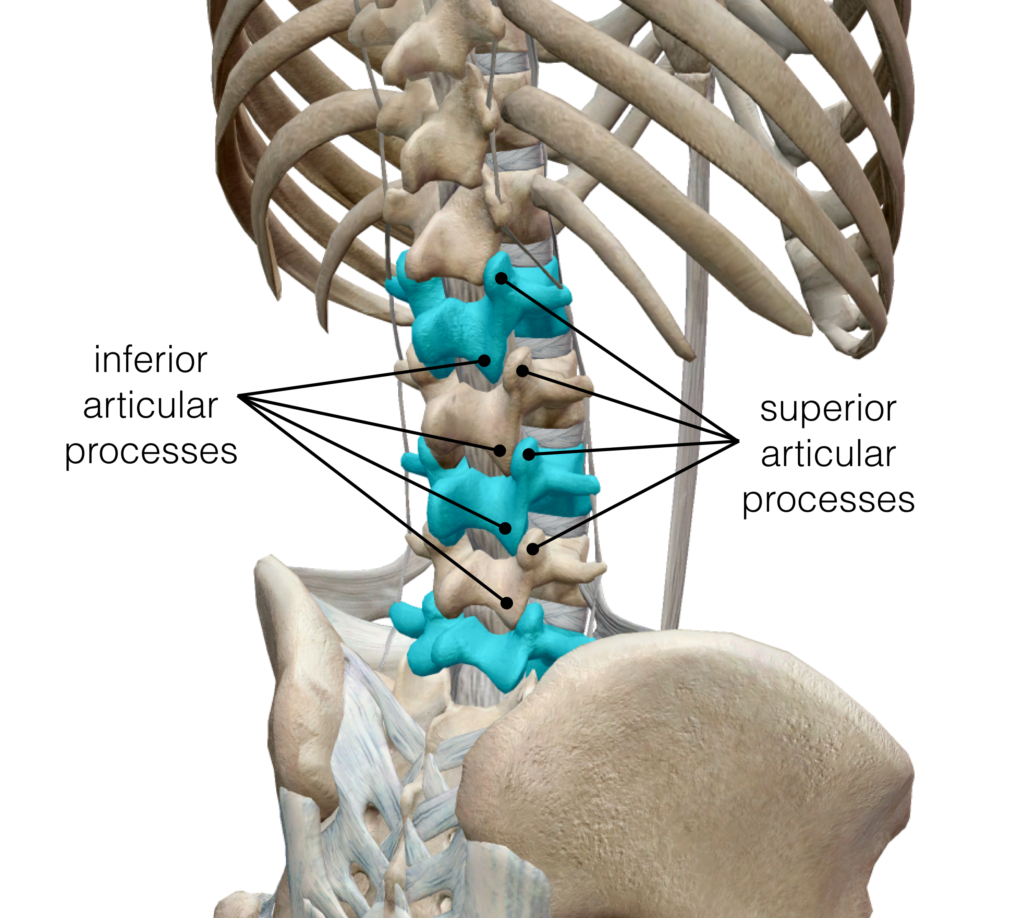
The thoracic team, each armed with a pair of ribs, wraps around the organs of the body, like a dragon around its hoard. Spines along their ridged backs prevent most bending forward and back, instead, storing and releasing energy in powerful, reciprocal coils, fueled by the great bellows of the lungs.
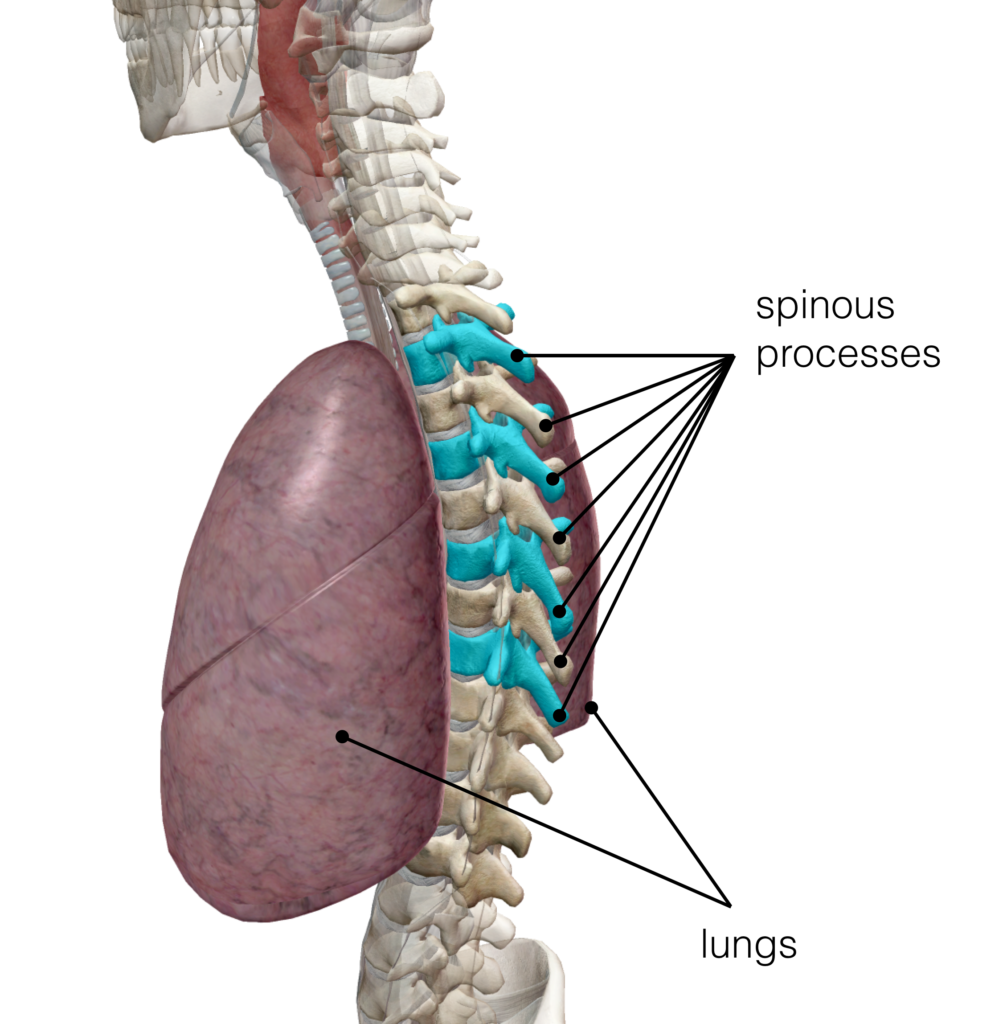 The cervical team, elite specialists, with four radically different shapes and functions among them, are the first to be mapped by the brain and the last, best line of defense against gravity. They are the protectors of that precious jewel—the skull—and can move in any direction to fulfill that responsibility.
The cervical team, elite specialists, with four radically different shapes and functions among them, are the first to be mapped by the brain and the last, best line of defense against gravity. They are the protectors of that precious jewel—the skull—and can move in any direction to fulfill that responsibility.
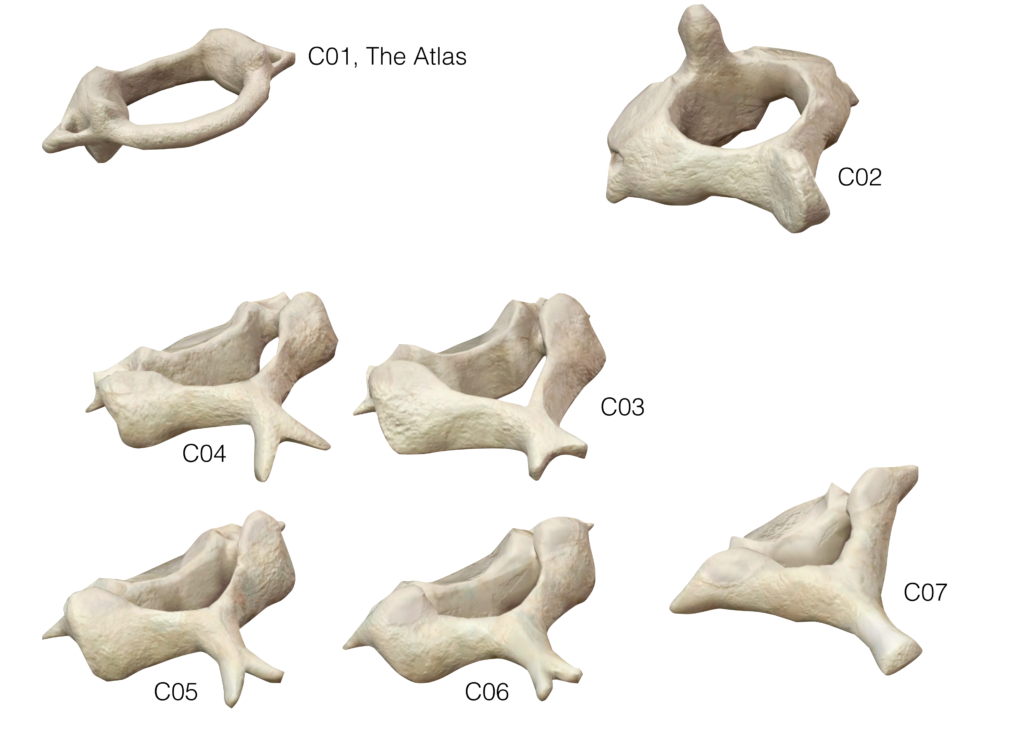
When the spine is in peak health, we don’t feel any of these teams in action. We only feel their cooperative output: powerful limbs, quick graceful movements, playfulness, confidence.
As threat or stress increases, the different spinal teams can go into a kind of local lockdown. These lockdown states are safe and effective in the short term but, over the long term, can be extremely painful.
For example: the same lumbar vertebrae transverse processes that define the edges of lumbar range of motion, if twisted only slightly, become pinned together, temporarily transforming your catapult into a ridged column of bone: great for dispersing one or two heavy impacts, but disastrous for long-term flexibility.
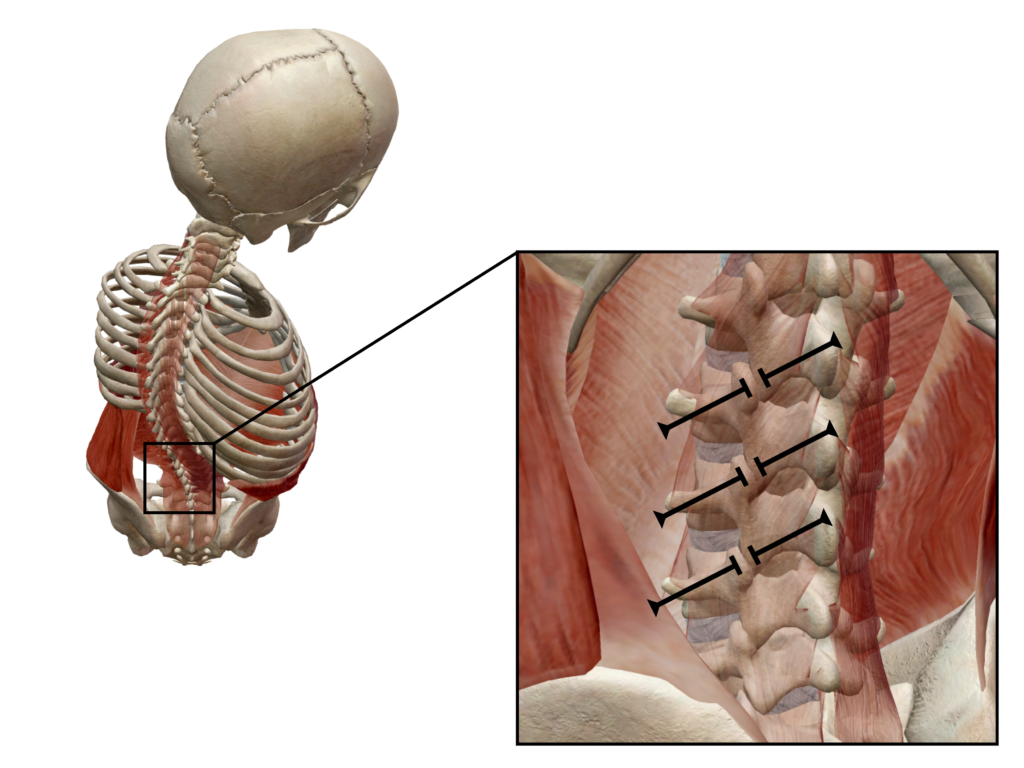
The ridges of the thoracic vertebrae, too, can be locked together in extension. Coupled with the shallow breathing that often accompanies stress, the thoracic body becomes an airbag instead of a dragon: better for a crash, yes, but with serious consequences for mobility and respiration if left unchecked.
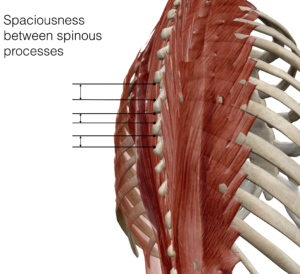
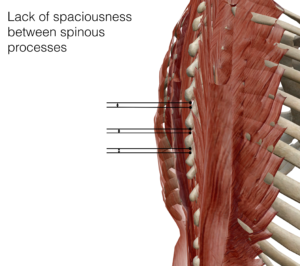
1. If you are experiencing low-back pain:
Your lumbar vertebrae are twisted, ever so slightly, in an effort to brace the transverse processes.
If you are to regain the ability to flex and extend pain-free, they will need to be untwisted. There are only two directions to twist, left and right.
Try them both. Begin with the hip and think of spiraling up. One direction will likely feel more relieving while the other feels more threatening.
Imagine, in your mind’s eye, the movement of the lumbar vertebral bodies as you twist. Can you see them moving? Can you feel them moving?
2. If you are experiencing mid- or upper-back pain:
You are probably not exhaling all the way. The body is keeping the lungs partially inflated, bracing for a crash.
To exhale all the way, you will need to bend the body down and forward to create spaciousness between your spinous processes.
Your head will drop, your ribs will narrow, your shoulders will round.
Can you take 5 breaths where this happens every time you exhale? Can you empty your lungs 100%?
3. If you are experiencing neck pain:
Among the first skeletal motions you ever developed after birth was picking up your head from a prone position.
Lay on your stomach. Imagine lifting your head to look at the room around you. In your mind’s eye, picture each vertebrae, and imagine how differently they might move, thanks to their unique geometry.
Now, if you like, actually lift it. Explore the ability of your neck to arch.
Use your hands for support. Push left with the hands to look right, push right with the hands to look left.
Now stand. Does your head sit differently on your skeleton?
Feel free to write about your experiences with these visualizations in the comments!

Leave A Comment:
Your email address will not be published.